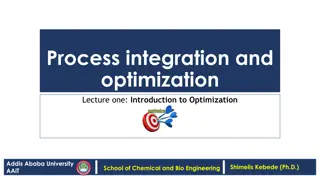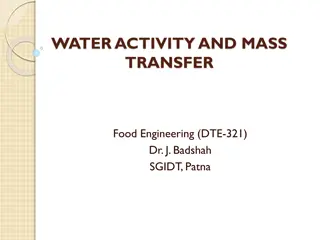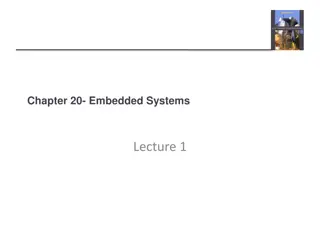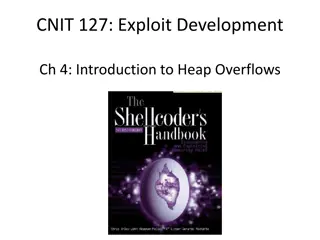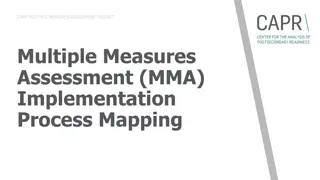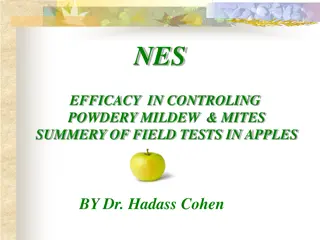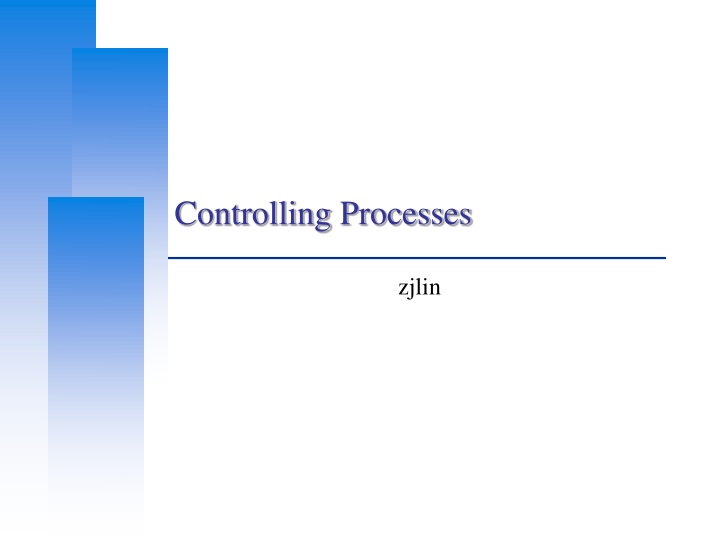
Processes in Computer Science at NCTU
Explore the lifecycle, attributes, and components of processes in Computer Science at NCTU, from creation to execution and termination. Learn about process IDs, memory allocation, and how processes interact within a system.
Download Presentation

Please find below an Image/Link to download the presentation.
The content on the website is provided AS IS for your information and personal use only. It may not be sold, licensed, or shared on other websites without obtaining consent from the author. If you encounter any issues during the download, it is possible that the publisher has removed the file from their server.
You are allowed to download the files provided on this website for personal or commercial use, subject to the condition that they are used lawfully. All files are the property of their respective owners.
The content on the website is provided AS IS for your information and personal use only. It may not be sold, licensed, or shared on other websites without obtaining consent from the author.
E N D
Presentation Transcript
Controlling Processes zjlin
Computer Center, CS, NCTU Program to Process Program is dead Just lie on disk grep is a program /usr/bin/grep $ file /usr/bin/grep ELF 32-bit LSB executable Executable and Linkable Format When you execute it It becomes a process Process is alive It resides in memory 2
Computer Center, CS, NCTU Components of a Process An address space in memory Code and data of this process A set of data structures within the kernel Used to monitor, schedule, trace, ., this process Owner, Group (Credentials) Current status VM space Execution priority (scheduling info) Information of used resource Resource limits Syscall vector Signal actions 3
Computer Center, CS, NCTU Attributes of the Process PID, PPID Process ID and parent process ID UID, EUID User ID and Effective user ID GID, EGID Group ID and Effective group ID Niceness The suggested priority of this process 4
Computer Center, CS, NCTU Attributes of the process PID and PPID PID process id Unique number assigned for each process in increasing order when they are created PPID parent PID The PID of the parent from which it was cloned UNIX uses fork-and-exec model to create new process 5
Computer Center, CS, NCTU Process Lifecycle fork child has the same program context fork(2) exec child use exec to change the program context execve(2) exit child use _exit to tell kernel that it is ready to die and this death should be acknowledged by the child s parent _exit(2) wait parent use wait to wait for child s death If parent died before child, this orphan process will have init as it s new parent wait(2) 6
Computer Center, CS, NCTU Attributes of the process UID GID EUID and EGID UID, GID, EUID, EGID The effective uid and gid can be used to enable or restrict the additional permissions Effective uid will be set to Real uid if setuid bit is off The file owner s uid if setuid bit is on Ex: /etc/master.passwd is root read-write only and /usr/bin/passwd is a setuid root program sabsd [/etc] -chwong- ls -al | grep passwd -rw------- 1 root wheel 2946 Sep 24 00:26 master.passwd -rw-r--r-- 1 root wheel 2706 Sep 24 00:26 passwd sabsd [/usr/bin] -chwong- ls -al /usr/bin/passwd -r-sr-xr-x 2 root wheel 5860 Sep 17 15:19 passwd 7
Computer Center, CS, NCTU Signal A way of telling a process something has happened Signals can be sent among processes as a means of communication by the terminal driver to kill, interrupt, or suspend process <Ctrl-C> <Ctrl-Z> bg, fg by the administrator to achieve various results With kill by the kernel when a process violate the rules divide by zero Illegal memory access 8
Computer Center, CS, NCTU Signal Actions when receiving signal Depend on whether there is a designated handler routine for that signal 1. If yes, the handler is called 2. If no, the kernel takes some default action Catching the signal Specify a handler routine for a signal within a program Two ways to prevent signals from arriving 1. Ignored Just discard it and there is no effect to process 2. Blocked Queue for delivery until unblocked The handler for a newly unblocked signal is called only once 9
Computer Center, CS, NCTU Signal FreeBSD signals signal(3) or see /usr/include/sys/signal.h FreeBSD Dump core # Name Description Default Catch Block 1 SIGHUP Hangup Terminate 2 SIGINT Interrupt (^C) Terminate 3 SIGQUIT Quit Terminate 9 SIGKILL Kill Terminate 10 SIGBUS Bus error Terminate 11 SIGSEGV Segmentation fault Terminate 15 SIGTERM Soft. termination Terminate 17 SIGSTOP Stop Stop 18 SIGTSTP Stop from tty (^Z) Stop 19 SIGCONT Continue after stop Ignore 10
Computer Center, CS, NCTU Signal Send signals: kill kill(1) terminate or signal a process % kill [-signal] pid Ex: First, find out the pid you want to kill (ps, top, sockstat, lsof ) $ kill -l (list all available signals) $ kill 49222 $ kill -TERM 49222 $ kill -15 49222 killall(1) kill processes by name $ killall tcsh $ killall -u lctseng 11
Computer Center, CS, NCTU Niceness How kindly of you when contending CPU time High nice value low priority Related to CPU time quantum Inherent Property A newly created process inherits the nice value of its parent Prevent processes with low priority from bearing high-priority children Root has complete freedom in setting nice value Use nice to start a high-priority shell to beat berserk process 12
Computer Center, CS, NCTU Niceness nice and renice nice format OS nice : $ /usr/bin/nice [range] utility [argument] csh nice(built-in) : $ nice [range] utility [argument] $ nice +10 ps -l renice format % renice [prio | -n incr] [-p pid] [-g gid] [-u user] % renice 15 -u chwong System Prio. Range OS nice csh nice renice FreeBSD -20 ~ 20 -incr | -n incr +prio | -prio prio | -n incr Red Hat -20 ~ 20 -incr | -n incr +prio | -prio prio Solaris 0 ~ 39 -incr | -n incr +incr | -incr prio | -n incr SunOS -20 ~ 19 -incr +prio | -prio prio 13
Computer Center, CS, NCTU cpuset command A system may have more than one CPU core How many CPU resource a process can use cpuset(1) 14
Computer Center, CS, NCTU cpuset command To see how many CPUs on your machine cpuset -g Run commands with less CPUs cpuset -l cpus cmd cpuset -l 8-15 ./hw1.out Change number of CPUs for current processes cpuset -l cpus -p pid cpuset -l 8-15 -p 5566 Combine with nice cpuset -l 8-15 /usr/bin/nice -n 20 cmd 15
Computer Center, CS, NCTU Process States man ps and see state keyword State Meaning I Idle (20+ second) R Runnable S Sleeping (~20 second) T Stopped Z Zombie D in Disk 16
Computer Center, CS, NCTU ps command (BSD Linux) ps sabsd [/home/chwong] -chwong- ps PID TT STAT TIME COMMAND 52363 p0 Ss 0:00.01 -tcsh (tcsh) 52369 p0 R+ 0:00.00 ps ps aux sabsd [/home/chwong] -chwong- ps aux USER PID %CPU %MEM VSZ RSS TT STAT STARTED TIME COMMAND chwong 52362 0.0 0.4 6536 3852 ?? S 5:02PM 0:00.01 sshd: chwong@ttyp0 (sshd) root 52380 0.0 0.3 3756 3224 ?? Ss 5:08PM 0:00.00 sendmail: accepting connections (s smmsp 52384 0.0 0.3 3644 2968 ?? Ss 5:08PM 0:00.00 sendmail: Queue runner@00:30:00 fo ps auxww sabsd [/home/chwong] -chwong- ps auxww USER PID %CPU %MEM VSZ RSS TT STAT STARTED TIME COMMAND chwong 52362 0.0 0.4 6536 3864 ?? S 5:02PM 0:00.02 sshd: chwong@ttyp0 (sshd) root 52380 0.0 0.3 3756 3224 ?? Ss 5:08PM 0:00.00 sendmail: accepting connections (sendmail) smmsp 52384 0.0 0.3 3644 2968 ?? Ss 5:08PM 0:00.00 sendmail: Queue runner@00:30:00 for /var/spool/clientmqueue (sendmail) 17
Computer Center, CS, NCTU ps command Explanation of ps aux (BSD Linux) 18
Computer Center, CS, NCTU ps command (BSD Linux) Use these options with shell scripts ps j sabsd [/home/chwong] -chwong- ps -j USER PID PPID PGID SID JOBC STAT TT TIME COMMAND chwong 52363 52362 52363 52363 0 Ss p0 0:00.03 -tcsh (tcsh) chwong 52458 52363 52458 52363 1 R+ p0 0:00.00 ps -j ps o sabsd [/home/chwong] -chwong- ps -o uid,pid,ppid,%cpu,%mem,command UID PID PPID %CPU %MEM COMMAND 1001 52363 52362 0.0 0.3 -tcsh (tcsh) 1001 52462 52363 0.0 0.1 ps -o uid,pid,ppid,%cpu,%mem,command ps -L sabsd [/home/chwong] -chwong- ps -L %cpu %mem acflag acflg args blocked caught comm command cpu cputime emuletime f flags ignored inblk inblock jid jobc ktrace label lim lockname login logname lstart lwp majflt minflt msgrcv msgsnd mwchan ni nice nivcsw nlwp nsignals nsigs nswap nvcsw nwchan oublk oublock paddr pagein pcpu pending pgid pid pmem ppid pri re rgid rgroup rss rtprio ruid ruser sid sig sigcatch sigignore sigmask sl start stat state svgid svuid tdev time tpgid tsid tsiz tt tty ucomm uid upr uprocp user usrpri vsize vsz wchan xstat 19
Computer Center, CS, NCTU top command last pid: 52477; load averages: 0.01, 0.05, 0.02 up 0+19:38:37 17:23:38 29 processes: 1 running, 28 sleeping CPU states: 0.4% user, 0.0% nice, 0.0% system, 0.0% interrupt, 99.6% idle Mem: 19M Active, 308M Inact, 113M Wired, 88K Cache, 111M Buf, 556M Free Swap: 1024M Total, 1024M Free PID USERNAME THR PRI NICE SIZE RES STATE TIME WCPU COMMAND 697 root 1 76 0 3784K 2728K select 0:02 0.00% sshd 565 root 1 76 0 1468K 1068K select 0:00 0.00% syslogd 704 root 1 8 0 1484K 1168K nanslp 0:00 0.00% cron Various usage top -q top -u top -Uusername Interactive command o u m ? run top and renice it to -20 don t map uid to username show process owned by user change display order (cpu, res, size, time) show only processes owned by user ( + means all) show IO information Listing available options 20
Computer Center, CS, NCTU htop command A better top Install it from sysutils/htop 21
Computer Center, CS, NCTU Runaway process Processes that use up excessive system resource or just go berserk kill -TERM for unknown process renice it to a higher nice value for reasonable process 22
Appendix Fork Bomb
Computer Center, CS, NCTU Fork Bomb A process forking out of control Cited from wiki 24
Computer Center, CS, NCTU Fork Bomb A process forking out of control 25
Computer Center, CS, NCTU Fork Bomb How to create a fork bomb Bash (Shell script) C/C++ :(){ :|:& };: Windows Perl DON T DO THAT!!!! 26
Computer Center, CS, NCTU Fork Bomb How to deal with fork bomb Just kill all of them $ killall -KILL bombName When you have no more resource to fork you shell $ exec killall -KILL bombName That shell will become killall , and never goes back killall isn t an atomic command More bombs may be created when killing them Run multiple killall 27
Computer Center, CS, NCTU Fork Bomb Prevent fork bomb Limit the maximum number of processes for a specific user /etc/login.conf 28


